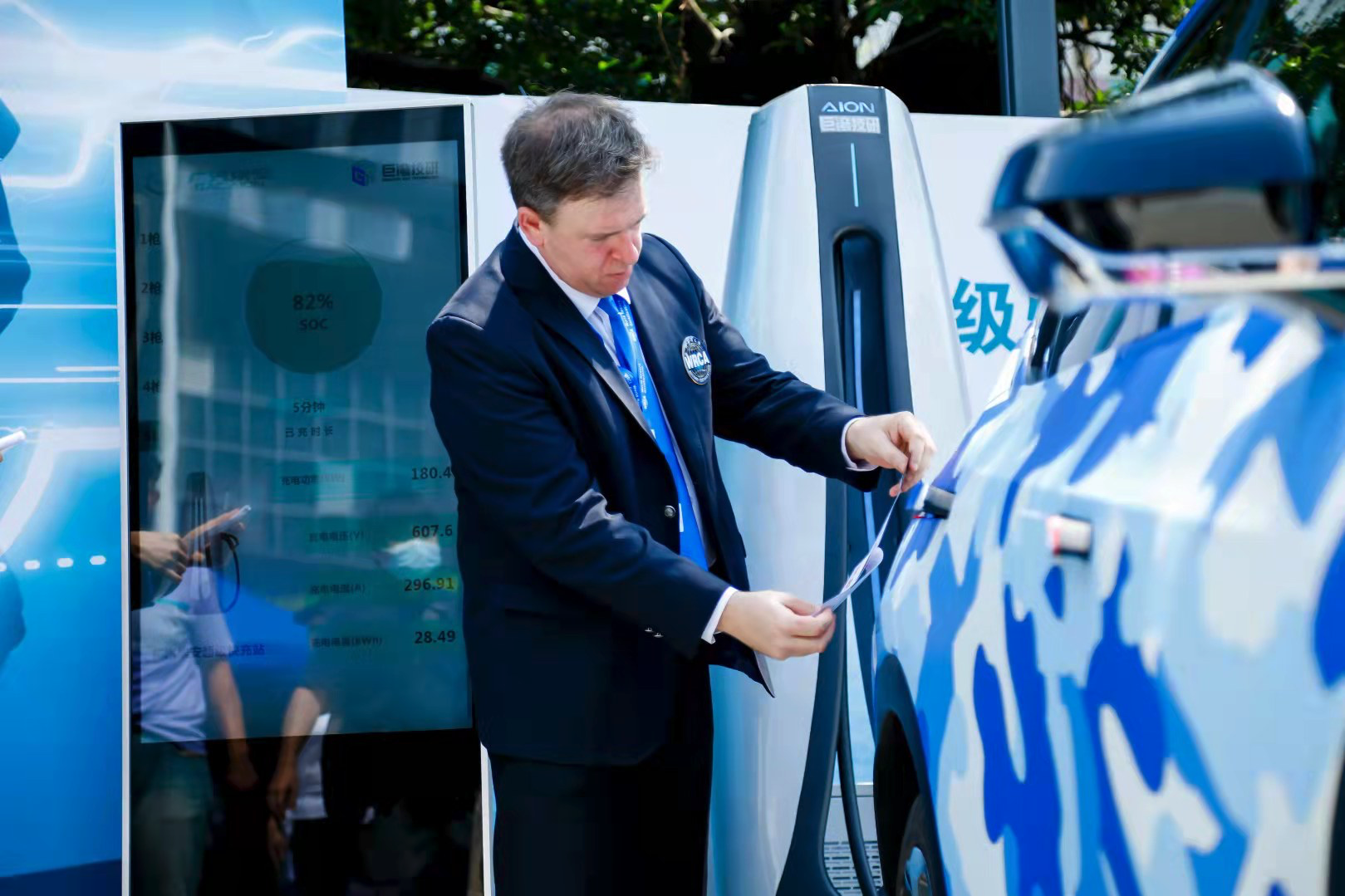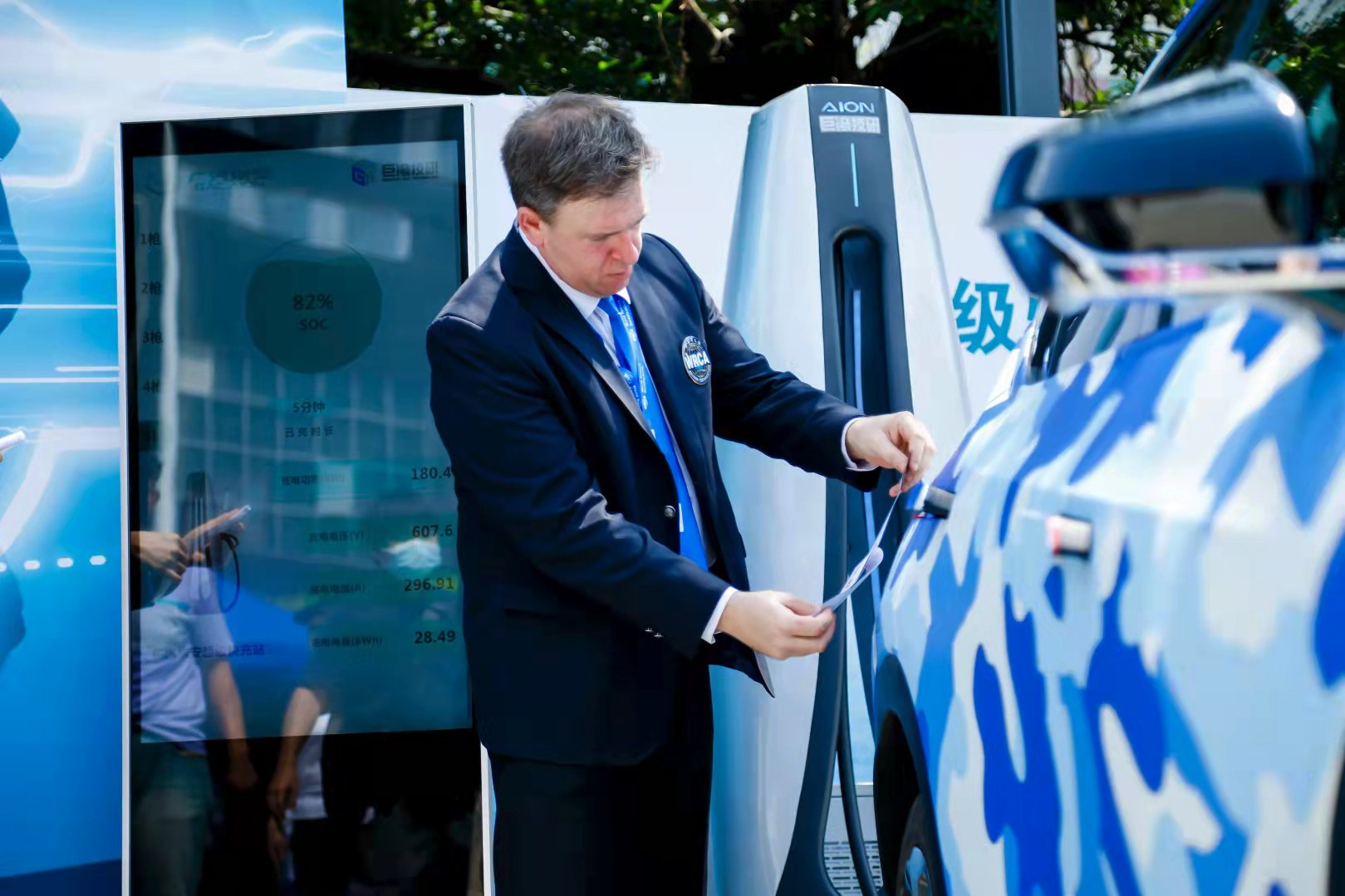In the past year, the electric car market has greeted a rapid development. The greatly increased number of electric cars has also led to a surge in the number of charging piles. Throughout 2020, the number of public charging piles in China increased from 531,000 to 807,000. However, this did not solve the problem that the charging speed for electric car owners is still slow, which is also one of the main factors hindering the large-scale popularization of electric cars.
In addition, the power of charging piles on the market is generally between 60 kW and 180 kW. Depending on the type of charging pile, it usually takes about 15-40 minutes to charge about 200 kilometers of range. The longer charging time not only affects the driving experience but also exacerbates the inefficiency of using the public charging network.
In response to this situation, on August 30, GAC Aion revealed their ultra-fast battery technology and A480 supercharger with the slogan “charge for 5 minutes, drive 200 kilometers”. Compared to other car companies that often tout their “smartphone industry” marketing phrases, using peak charging power to claim success, GAC Aion’s release was unexpected.
During the conference, GAC Aion claimed to be able to charge up to 80% in 5 minutes. Prior to the release, I thought GAC Aion would likely use a very large capacity battery and take only a small portion of the peak charging performance. However, GAC Aion’s 5-minute charging not only improved the range by 200 kilometers, but also increased the battery level from 28% to 82%. This was not just a small peak charging performance. Furthermore, the test vehicle’s displayed range was increased from 140 kilometers to 408 kilometers, which means that the NEDC range was actually increased by more than 260 kilometers during these five minutes, with an average energy replenishment rate of over 50 kilometers per minute. GAC Aion also challenged the WRCA world record certification at the conference. The Aion test vehicle ultimately drove for 207 kilometers on a combined urban and highway test route.
Of course, some may question whether the range of 30%-80% is not convincing enough to prove that it is the best charging interval. However, this is indeed the interval with the highest charging efficiency, and it only took 5 minutes to achieve this result. If such a charging time is applied in actual scenarios, such as the widespread adoption of such charging stations for high-speed travel or urban use, the problem of slow or difficult charging will become a thing of the past.
What is the principle behind it?
So how did GAC Aion achieve such a charging speed?
This involves the charging principle of lithium-ion batteries. Simply put, the charging process of our daily lithium-ion batteries is not achieved through the transfer of electrons, but through the entry and exit of lithium ions in the crystal material of the layer, which causes energy changes, i.e., the migration process of lithium ions. Lithium ions are desorbed from the positive electrode, pass through the membrane and electrolyte, and are embedded into the negative electrode. If more lithium ions migrate and embed into the negative electrode in the same amount of time, it means that the charging speed is faster.
Therefore, the problem of improving the charging efficiency becomes how to solve the problems of low migration speed and low embedding efficiency of lithium ions. Most technological iterations are based on these two aspects.
On the one hand, GAC Aion uses high-porosity ceramic-coated membranes and new low-viscosity high-power electrolytes to solve the problem of low migration speed of lithium-ion batteries. In simple terms, it reduces the obstacle of lithium ions flowing between the positive and negative channels.
On the other hand, GAC Aion adopts new technologies and materials such as unique soft carbon, hard carbon, and graphene encapsulation modification to improve the embedding efficiency of lithium ions. Of course, graphene material with excellent thermal conductivity and conductivity plays a critically important role in this process.
In addition, cost control is also a prerequisite for commercialization in the market. According to official statements, GAC Aion has mastered the independent research and development of 3D structured graphene “3DG” preparation technology, and has the ability to stably produce 3D graphene materials at a controllable cost. In addition, GAC Aion has also launched an 880V high-voltage platform, which can achieve a maximum charging power of 480 kW based on this high-voltage platform.
Charging stations are also important
Of course, battery performance and high-voltage platforms are only one aspect of improving charging speed. Even the best battery will not work properly if it encounters the “Schrodinger” charging station of State Grid at a high-speed service area. Therefore, GAC Aion has also launched the matching A480 charging station. Let’s first take a look at the basic information of the A480 super charging station. First, the maximum current is 600A, and the highest voltage is 1000V. The maximum theoretical peak charging power of this station can reach 600 kW.Here’s the English version of the Markdown text, maintaining HTML tags and only providing corrections and improvements:
Here, you can compare some of the top charging stations currently available on the market. Tesla’s V3 supercharger has a peak charging power of 250 kW. During the Q3 2020 earnings call, Jerome Guillen, Tesla’s Automotive President, mentioned that Tesla is working on a 350 kW maximum charging power station. On the other hand, just recently, Zeekrxueyuan (XK), a Chinese education platform for developers, launched Zeekrxueyuan 001, which operates on a 360 kW charging station capable of charging up to 120 km in just 5 minutes, even with low battery levels.
Due to the high power rating, in order to avoid overburdening users when charging, A480 supercharger’s gun cable is made of lightweight liquid-cooled wires. This move prevents the charging cable from being too heavy and also enhances its heat dissipation.
Currently, the first A480 supercharging station has been completed in Guangzhou’s Donghong International Plaza. Guangzhou Automobile Group Aion’s official statement also revealed that they plan to construct 2,000 A480 supercharging stations in around 300 cities by 2025, allowing for travel from Guangzhou to Beijing, Shanghai, and Yungui, among other provinces.
However, Guangzhou Automobile Group Aion mentioned that the current supercharging stations will use the 1-to-N pattern, meaning one 480 kW supercharger station is accompanied by several 180 kW supercharging stations. This move highlights how the large wattage charging stations, like A480, remain limited due to production costs and production capacity. For these types of charging stations to become more widespread, it will take time.
Closing Thoughts
In fact, for a long time, third-party operators and the government have been the main force behind the revival of electric vehicles’ energy-supply system. However, electric vehicles have gradually gained recognition in the consumer market in recent years, and the number of electric vehicles in use has increased substantially. More and more car companies now focus on user experience and energy-replenishing systems. Of course, the increasingly large sums of funds pouring into the power supply sector year after year are also reasons why technological innovation in charging infrastructure has accelerated.
What we need to do is to wait for the day when charging is as convenient as refueling a car. Aion’s A480 charging station is undoubtedly a significant step in the right direction.
🔗Source: GAC Aion press conference
This article is a translation by ChatGPT of a Chinese report from 42HOW. If you have any questions about it, please email bd@42how.com.
